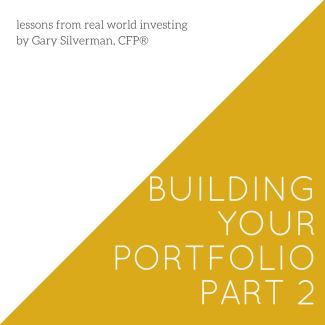
Building a diverse portfolio to reduce risk
Throughout history, all asset classes have given positive total returns. They haven’t, however, done this at the same time or in the same amounts.
Studying the volatility (risk) and returns of the different asset classes shows that in combination they can reduce long-term volatility without decreasing returns. In some cases, such mixes may even increase returns while decreasing risk. It’s like having your cake and eating it, too.
This is asset allocation: a combination of what types of investments you use in your portfolio and what amounts of each you use. Once the allocation is set, the periodic rebalancing combines to produce much of its benefit.
A 10-year study by Brinson, Hood, and Beebower set out to examine how the investment results of 91 large pension funds were determined and why they differed. The results surprised the entire investment community. Though many parts of the study are not relatable to individual investors, it did show that the mix of assets greatly affects the return of a portfolio.
Later analysis of the study confirmed this and measured that about half of the returns of a portfolio were due to the asset allocation mix chosen.
This doesn’t mean that properly blended asset classes will keep you from losing money. Horrific economic conditions usually mean a broad sell-off across most all asset types (think 2008). Yet over the long-haul, asset diversification will effectively remove quite a bit of your portfolio’s risk.
If most of the performance of your portfolio has to do with what types of asset classes you use and in what proportion you use them, your first focus in building your portfolio should be on that, rather than market timing or individual security selection. Yet the hype and enthusiasm of finding that perfect stock, bond, or mutual fund tend to entice most investors.
Individual security selection and market timing still have their proper places, but it's clear from the available research that the asset allocation decision has the primary impact on investment success.
Developing an effective asset allocation strategy can become complicated. There are dozens of asset classes within the basic categories of stocks, bonds, and cash; each with different risk/reward tradeoffs. Nevertheless, since proper asset allocation is critical to meeting your financial goals it deserves more study and attention than most give it.
A report from Finametrica and Money Magazine suggested that the average investor could stand the risk of having 56% of their money in stocks with the rest in bonds and other low-risk investments. Those who were quite risk tolerant could stand 70% or more to be in the stock market. Those with low risk tolerance scores could handle, at most, 30%.
Mark your calendars for a free seminar. Attorney Dan Campbell, Michelle Kuehner, and I are teaming up to discuss Trusts: How to create and maintain them, and how to protect assets both within and outside of them. Location: Homewood Suites (2675 Plaza Pkwy) on August 31 from 6 to 8 p.m. RSVP by calling 940-692-6885.

